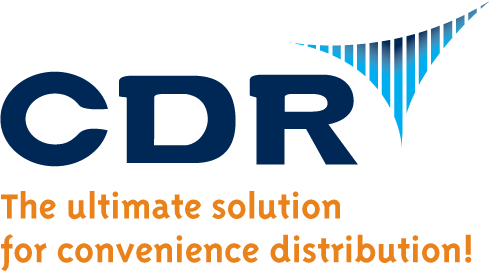Want to know how top-performing warehouses stay ahead? Data-driven decisions might be the missing link.
Warehouse operations today are more demanding—and more essential—than ever. For convenience distributors, speed, accuracy, and efficiency aren’t just nice to have. They’re the difference between keeping a loyal customer and losing business to a faster competitor. Amid rising expectations and tighter margins, the key to staying ahead isn’t just working harder, it’s working smarter.
That’s where data analytics comes in.
With the right data at your fingertips, you can spot inefficiencies, respond to bottlenecks in real time, and make more informed decisions about staffing, layout, inventory, and more. Data analytics turns warehouse management from a reactive task into a proactive strategy.
Today’s leading distribution-focused software solutions include built-in reporting and analysis tools, making it easier than ever to turn raw data into measurable operational improvements.
What Is Warehouse Performance Analytics?
At its core, warehouse performance analytics is the process of collecting and analyzing data to track how well your warehouse is functioning. It’s about more than just printing out a report at the end of the week—it’s a continuous process that helps operations managers make smarter, faster decisions.
By monitoring key performance indicators (KPIs), you gain visibility into the heart of your warehouse. Some of the most common and useful KPIs include:
- Order accuracy rate: How often orders are picked, packed, and shipped correctly.
- Picking and packing speed: How quickly warehouse staff can complete their tasks.
- Inventory turnover: How efficiently products are moving in and out of the warehouse.
- Space utilization: Whether you’re making the most of your available storage area.
- Cycle time: The total time it takes to complete a process, from order receipt to fulfillment.
These metrics give you a data-backed view of your operations. The goal isn’t to micromanage every detail, but to give leaders the clarity they need to guide smarter strategy and continuous improvement.
Spotting Inefficiencies Before They Become Costly
Even the most experienced warehouse managers can miss hidden inefficiencies—especially when they rely on instinct rather than hard data. Slow pick times, inaccurate stock levels, repeated mispicks, or poor slotting often go unnoticed until they start affecting customer service or eroding profits.
Data analytics changes that by turning patterns into insights. When you track operational metrics over time, trends begin to emerge: maybe one shift consistently lags behind others, or certain products are frequently mispicked due to their location or packaging. These small issues often point to deeper process problems.
For example, your metrics might reveal that pick times are consistently longer in certain zones, indicating a need to adjust layout, product slotting, or workflow design.Or you might notice high error rates with a specific product. That insight could prompt a deeper look at labeling, training, or shelf location. The goal isn’t just to fix problems when they arise—it’s to catch them early and address root causes before they escalate.
Real-Time Visibility and Operational Responsiveness

When managers have access to current warehouse activity data, they can make quick, confident decisions throughout the day to keep operations on track.
For instance:
- If a picker falls behind, supervisors can reassign tasks on the spot.
- If an area of the warehouse becomes overloaded with incoming goods, space can be reallocated immediately.
- If orders are trending late, alerts can be triggered to investigate and resolve the issue before customers are impacted.
Dashboards and alerts keep teams informed without manual checks. And when warehouse analytics are integrated into your broader systems—such as inventory, order management, or fulfillment—you gain deeper visibility into how each part of your operation is performing in context.
This kind of responsiveness helps you stay flexible, especially during peak periods or unexpected disruptions. Instead of scrambling to react, you’re prepared to adjust and adapt—confident that the data is giving you a clear, up-to-date picture of what’s happening on the warehouse floor.
From Data to Improvement: Making Informed Operational Decisions
Analyzing warehouse performance data isn’t just about reacting to problems—it’s about uncovering opportunities for long-term improvement. Historical data helps identify trends, seasonal shifts, and process bottlenecks.
For instance, reviewing a year’s worth of order volume and cycle time data might reveal that certain products experience delays during peak seasons, suggesting a need to adjust staffing or pre-position inventory. You might also notice that some vendors routinely cause receiving delays—insight that could influence future purchasing decisions or negotiations.
Here are just a few ways leaders can act on performance data:
- Restructuring shift schedules to align with actual order demand
- Optimizing slotting based on pick frequency and product velocity
- Reworking replenishment practices to reduce stockouts and overstocks
Data provides the “why” behind every change, helping you prioritize improvements that will have the greatest impact on performance and profitability.
Creating a Data-Driven Warehouse Culture
To see meaningful gains, you also need buy-in from the people who run your warehouse day-to-day. That means building a culture where data is not only available—but valued.
Start by making performance metrics accessible to your team. Visual dashboards or KPI scoreboards can help staff see how they’re doing, where they’re excelling, and where there’s room for improvement. Some companies use performance metrics to recognize and motivate top-performing employees—such as highlighting the most accurate pickers or the fastest, most consistent packers.
Training is essential—employees need to understand what metrics mean, why they matter, and how they impact performance. By connecting their daily work to the bigger picture, you foster a sense of ownership and accountability.
Ultimately, a data-driven culture empowers everyone—from the warehouse floor to upper management—to contribute to continuous improvement. When data becomes part of the everyday workflow, efficiency and accuracy naturally follow.
Why Data Matters for Convenience Distributors

In convenience distribution, speed and precision are everything. Orders are often small, frequent, and time-sensitive—meaning even a minor warehouse inefficiency can ripple outward, delaying deliveries or increasing costs. Data analytics helps distributors stay agile and competitive by shining a light on these everyday challenges.
Unlike general retail or manufacturing environments, convenience distributors deal with:
- High volumes of fast-moving SKUs
- Complex vendor and customer order profiles
- Limited storage space in warehouses and delivery vehicles
- Tight delivery windows to multiple retail locations
It’s essential to understand not just what’s happening, but why—so you can respond quickly to issues. Analytics tools provide the clarity needed to identify issues like inventory shortages before they cause delays, or to see which picking methods deliver the best balance of speed and accuracy.
For companies in this space, warehouse performance isn’t just an internal metric—it directly impacts service levels, customer satisfaction, and long-term profitability. Data gives you the visibility and control to meet these demands consistently.
Unlock Deeper Insights with CDR Software’s DAC ERP
For distributors who want to turn data into smarter decisions, CDR Software’s DAC ERP offers warehouse visibility that goes beyond the basics. Built specifically for the convenience distribution industry, DAC ERP brings together inventory, order management, warehouse performance, and delivery operations into a unified system.
Key features include:
- Performance dashboards to track key warehouse KPIs
- Custom reporting tailored to the needs of distributors
- Tightly integrated warehouse and delivery modules to ensure accurate fulfillment and real-time visibility
- Proactive alerts and exception reporting to help managers act fast when performance dips
By aligning warehouse analytics with inventory and sales data, DAC ERP empowers distribution leaders to make informed decisions that drive efficiency, reduce costs, and improve service levels across the board.
Conclusion
Data analytics is no longer a luxury for large-scale operations—it’s a practical, powerful tool that every convenience distributor can use to improve warehouse performance. From identifying inefficiencies to driving better decision-making, data helps warehouse teams move beyond reactive management and toward proactive, strategic growth.
If you’re already collecting performance data but not sure how to act on it, now’s the time to take a closer look. And if your current system doesn’t provide the insights you need, it might be holding your operation back.
With the right tools and mindset, your warehouse can become a hub of efficiency and accuracy.
Ready to see what your warehouse could achieve with the right data in your hands? Contact us to learn more about DAC ERP.
FAQs
What is warehouse performance analytics?
Warehouse performance analytics involves tracking key metrics like order accuracy, picking speed, and inventory turnover to identify inefficiencies and improve operations.
How can data analytics improve warehouse efficiency?
By analyzing real-time and historical data, warehouse managers can spot trends, respond to issues faster, optimize layouts, and make more informed staffing and inventory decisions.
Which KPIs are most important for warehouse performance?
Key KPIs include order accuracy, picking and packing speed, inventory turnover, space utilization, and cycle time from order receipt to fulfillment.
Do small and mid-sized distributors need data analytics?
Yes. Even smaller warehouses can benefit from data-driven insights to reduce waste, improve accuracy, and stay competitive in a fast-moving distribution environment.
Can ERP systems help with warehouse performance analytics?
Yes. Many ERP systems, like DAC ERP from CDR Software, include integrated reporting and dashboard tools that give distributors the insights they need to improve warehouse operations.

